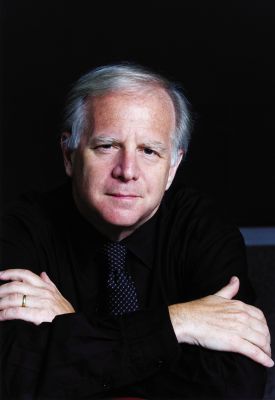|
<<< << -- 2 -- Malcolm Miller A MEMORABLE CONCERT

Against this starlit soundworld, radical for its time (even if its Paris première was lukewarm), the more earthy romanticism of Weber and Brahms might have sounded somewhat rough were it not for the sheer zest and stylish conducting of Slatkin. The magical horn calls of Weber's Oberon Overture, given a scintillating reading, were matched, if not surpassed, by the equally spellbinding horns of the finale to Brahms' first symphony, a movement in which each section of this magnificent orchestral organism came to life, with supple expression and vigour. Soloistic contributions were rife, the oboe's poetic penetrating second movement theme, or the bubbling clarinet's of the third movement. What made this work burst into life was Slatkin's sculpting of the sound, his experience of Mahler, Vaughan Williams, and recently Walton (Belshazzar's Feast at the Royal Albert Hall) allowing the music to expand into its vastness of proportion still imbued by lucidity and textural detail.

Leonard Slatkin. Photo © Steve J Sherman
|
The outpouring of contrapuntal string lines in the first movement, the tension of poised suspensions sustained in strings or wind, every detail of harmony was allowed due space. The tone lacked no resonance due to the unusual arrangement of double basses at the rear left near the centrally placed cellos, which created a weighty bass effect, especially given the already generous acoustics of the hall that swelled the resonance. After the drama of the first movement the inward hymn like simplicity of the slow movement was enthralling, as too the volatile suppleness of the more complex third movement. Yet the whole work moved in inevitable inexorable logic to the finale, whose heaving proto-Brucknerian introduction gave way to the neo Beethovenian theme which miraculously finds its individuality in Brahms' own idiom. Even more remarkable perhaps than that Brahms waited till he was forty to compose a symphony is the fact that fifty years after the ninth symphony, a theme so obviously modelled on the choral finale could inhabit an entirely new expressive world, one of harmonic richness and ambiguity, propelling the moods of dark melancholy to the peaks of intensity and brightness with which the work concludes. Under Slatkin's inspired command the RPO impelled the movement's process with galvanising force, especially in the final syncopated tuttis; a vivid, vital interpretation, compelling up until the last chord, to round off a memorable concert.
Copyright © 8 November 2007
Malcolm Miller, London UK
 CHLOË HANSLIP
THE ROYAL PHILHARMONIC ORCHESTRA
LEONARD SLATKIN
CADOGAN HALL
CHLOË HANSLIP
THE ROYAL PHILHARMONIC ORCHESTRA
LEONARD SLATKIN
CADOGAN HALL
|

